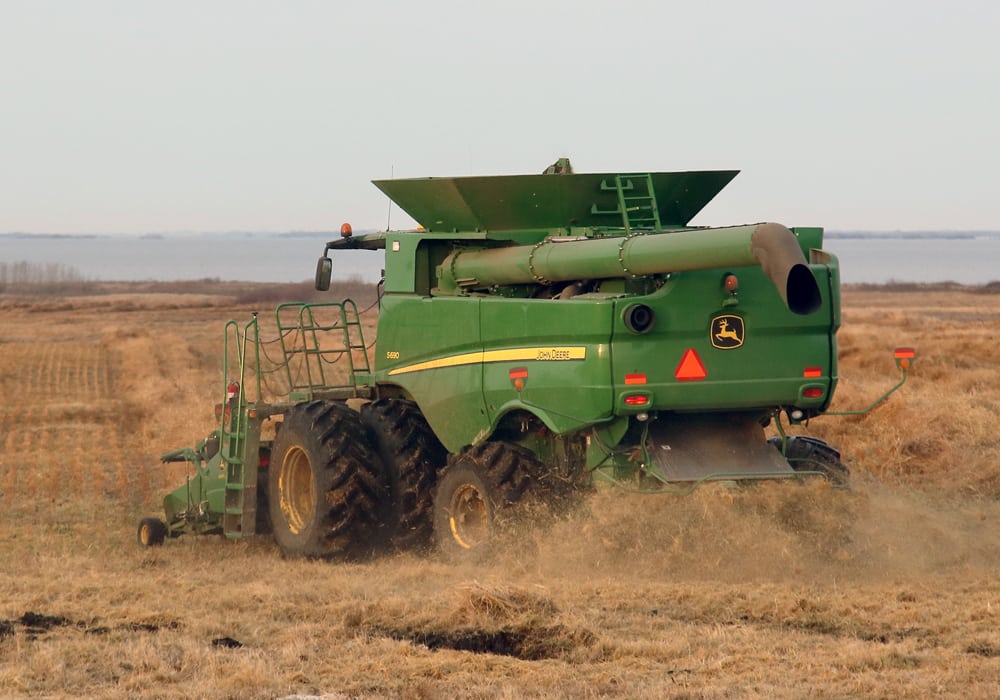Lentil processors say the Canadian Grain Commission is leaving international buyers with the mistaken impression that this year’s lentil crop is of normal quality.
The commission released a preliminary quality data report that indicates 90 percent of the lentil crop was No. 2 or better based on 145 harvest samples analyzed as of Oct. 15.
That isn’t even close to reality, said Greg Simpson, president of Simpson Seeds. He believes the proportion of the crop in the top two grades is even below Saskatchewan Agriculture’s Sept. 18 estimate of 39 percent.
Read Also

Biofuel sector happy with federal budget
Advanced Biofuels Canada says new Biofuel Production Incentive is a lifeline until CFR amendments are in place.
He said it is reckless for the commission to release that kind of unrepresentative data.
“I just think it was wrong for them to come out with a stat so early without having a sufficient sampling,” he said.
“They just couldn’t have captured the real grade out there.”
His company has analyzed thousands of samples, which indicate there was a quality wreck with the 2014 lentil crop.
Simpson wasn’t willing to divulge how many of those samples were No. 1 or No. 2 quality for competitive reasons, but the company’s sales force was at a food exhibition in Paris last week warning buyers to lower their expectations.
Anthony Kulbacki, chief operating officer of Legumex Walker’s special crops division, estimates that only 25 to 30 percent of this year’s harvest will be No. 2 or better.
“The vast majority of the lentils that we’re seeing fall in that Extra 3 or 3 categories,” he said.
This year’s crop will require more processing than usual, but it is marketable, and there should be sufficient global demand for the product.
“We’ll get through this year. I don’t think it’s as challenging as 2010,” said Kulbacki.
He encouraged growers to deal with big processors that have the equipment and sales channels to deal with poor quality product.
Daryl Beswitherick, quality program manager at the grain commission, acknowledged there are flaws with the volunteer harvest sampling program.
“Sometimes our numbers could be out,” he said.
Beswitherick said the Oct. 15 report was the commission’s first stab at assessing lentil quality. New data already suggests quality is dropping, with about 60 percent in the No. 2 or better categories.
That is still about twice as much as the trade estimate, which is based on much larger sample sizes. The grain commission isn’t disputing the trade findings.
“The number of (CGC) samples is low. We would like to see a lot more samples, but it is what we’ve received to date,” said Beswitherick.
Simpson said the trade is increasingly distancing itself from the commission when it deals with buyers.
“They’ve lost a lot of credibility, especially when they come out with reports like that,” he said.
“At the end of the day, the grain commission doesn’t stroke a cheque. We’re the ones that write the cheques to farmers and we’re the ones that have to take the risk of marketing what we buy from farmers internationally, and I tell you what, you better get it right.”
Simpson agreed with Kulbacki that crop quality isn’t as bad as it was in 2010. He feels the trade will be able to sell the entire 1.7 million tonne crop over the next 12 months.
Processors have a lot of experience marketing poor quality lentils from years like 2010, 2004 and 2002.
Grade specifications have been tightened for No. 2 or better red lentils, so there shouldn’t be any big surprises for buyers.
Kulbacki thinks more work needs to be done developing standards that deal with wrinkled seed coats on green lentils.
“I don’t think that the grading or the standards from the CGC are as well developed in that area as they should be,” he said.
Simpson expects growers holding good quality lentils will delay delivery as they wait for prices to rise. That can be a dangerous strategy, he added.
“In this time right now of discovery of price and quality, that’s the most volatile time, and that’s sometimes the best opportunity for people to market the product,” said Simpson.
He said he has noticed during his 35 years in the business that farmers don’t always respond to price signals the way he would expect.
“If you raise the bid, why do you buy less, and if you drop the price, you buy more? Typically that’s our experience,” he said.
Simpson said today’s prices are attractive. No. 2 or better red lentils were selling for 30 cents per pound last week, while No. 1 large green lentils were fetching 36 cents and No. 2s were in the 31 to 33 cent range.
“These values will probably stay pretty much in place through the season,” he said.
Buyers will switch to other sources of vegetable protein if lentils get too pricey.
















